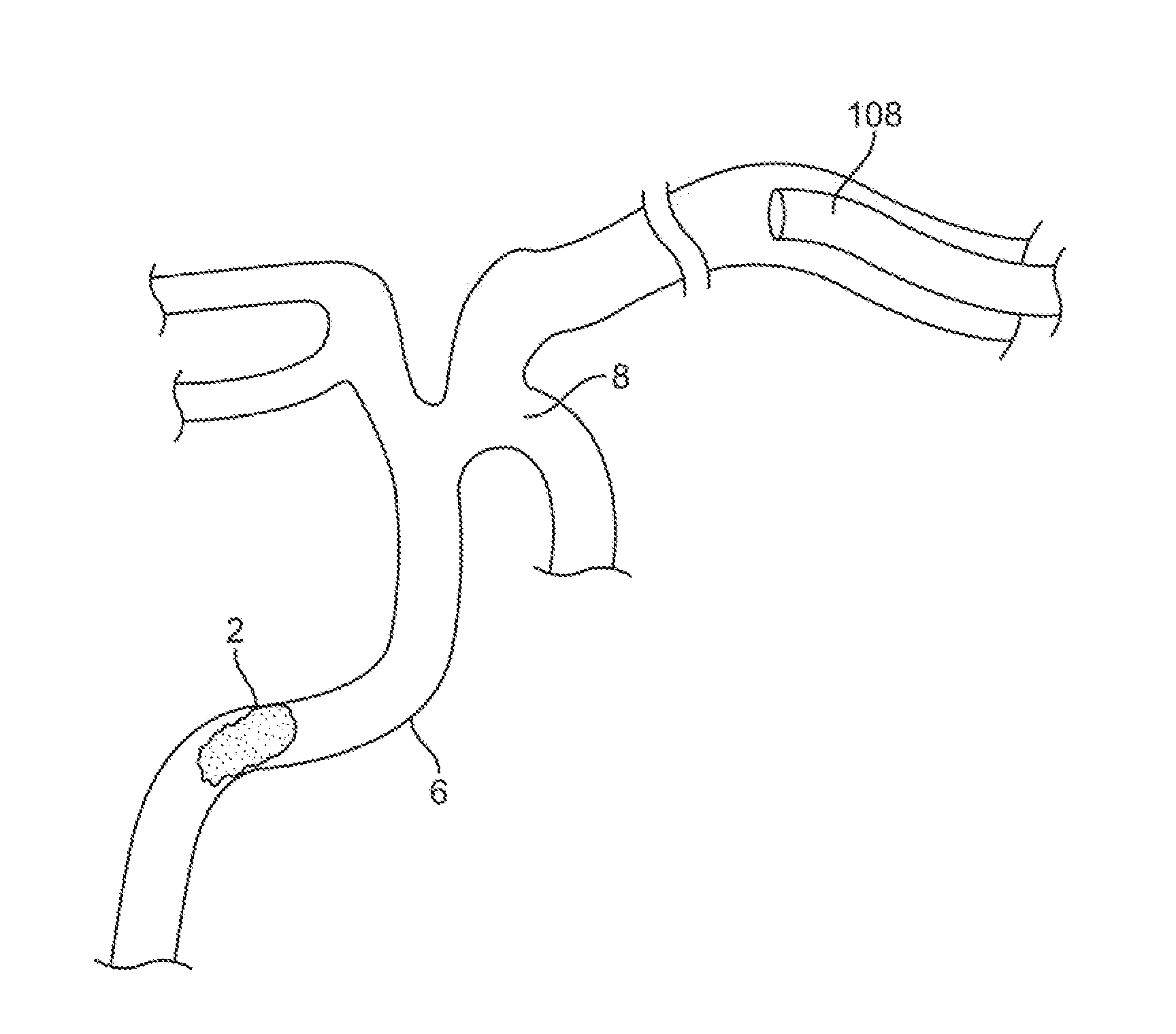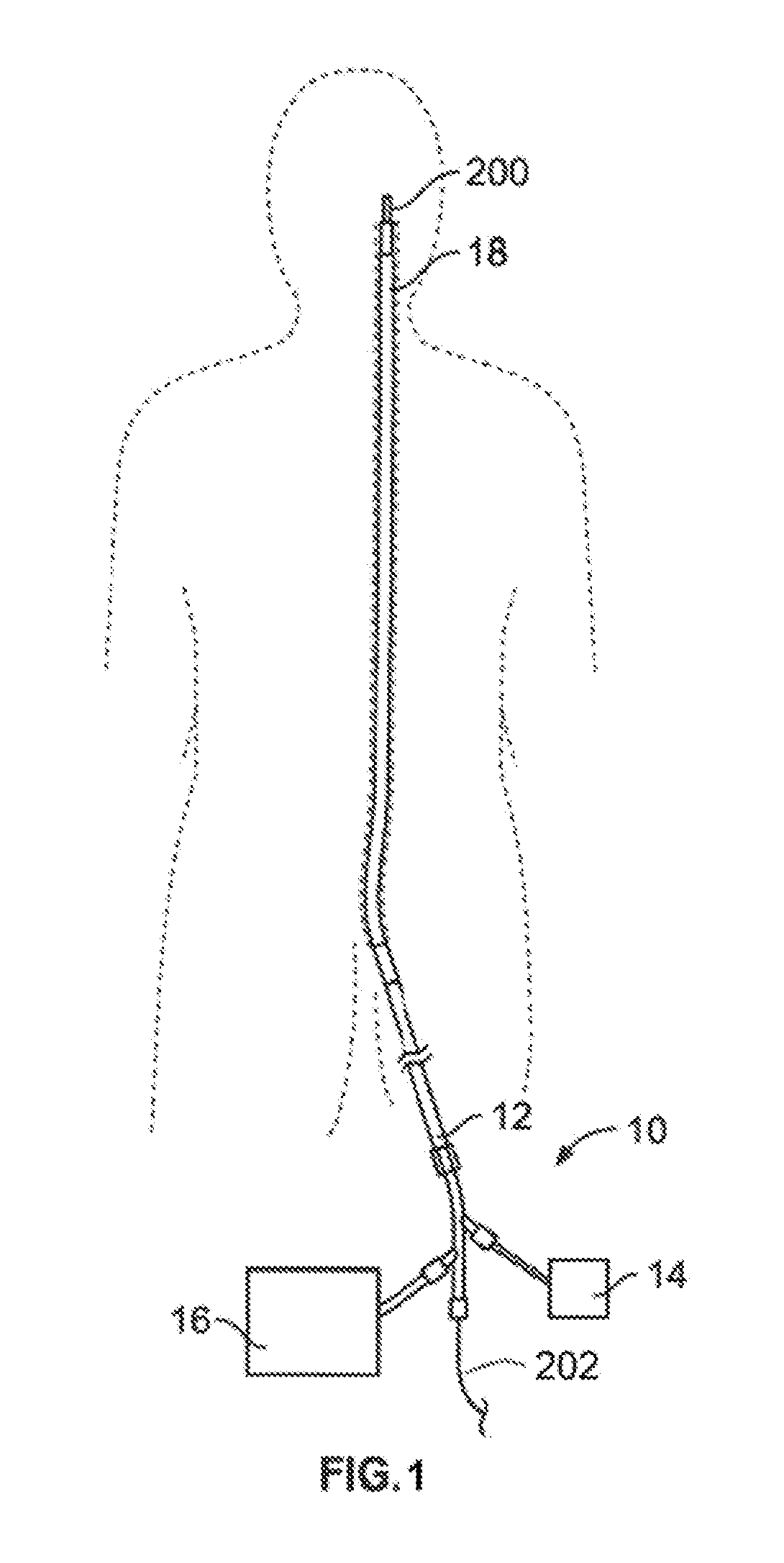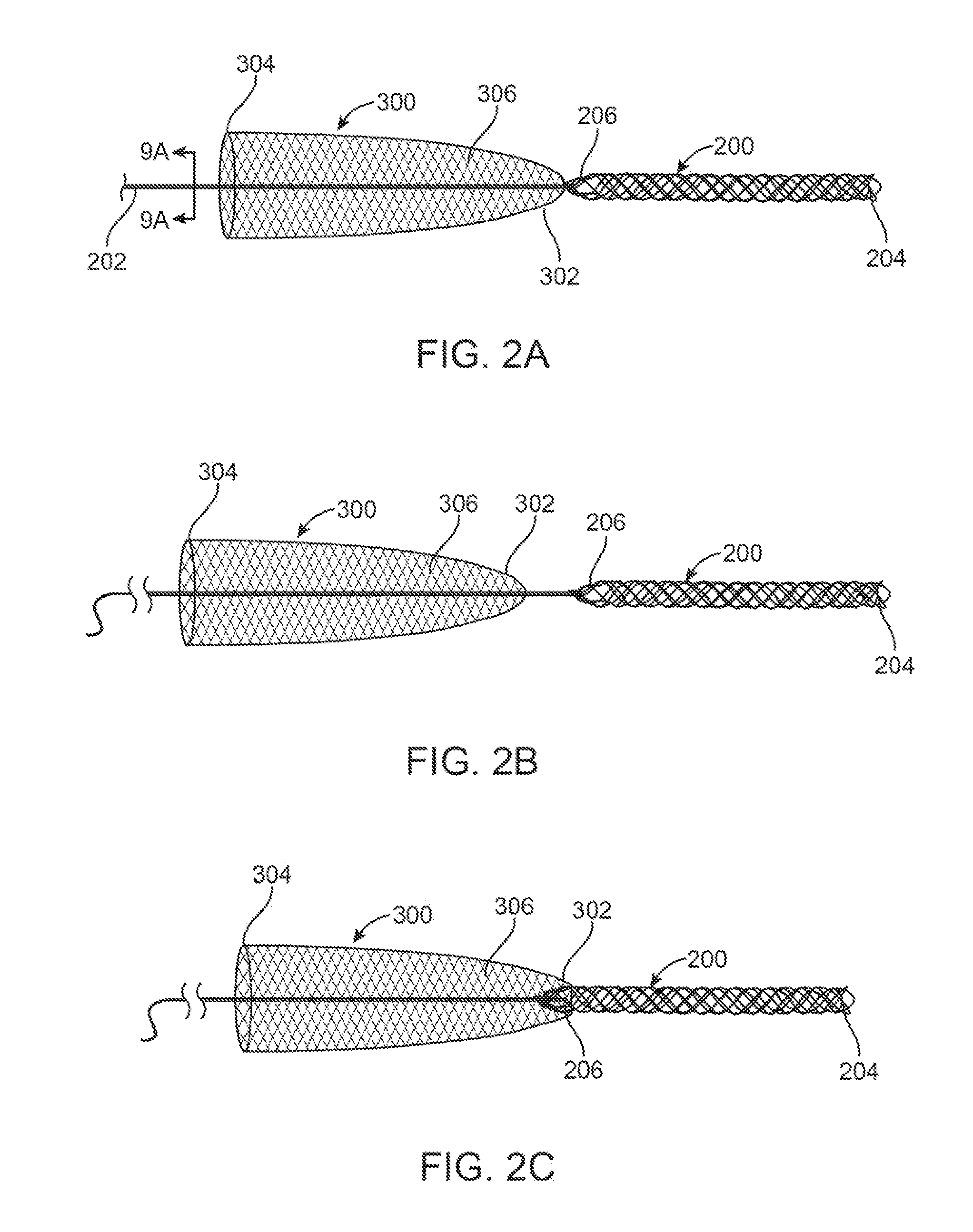Retrieval systems and methods for use thereof
a technology applied in the field of retrieval systems and methods for use thereof, can solve the problems of increasing the risk of injury, so as to improve the ability of the device, improve the flexibility and strength of the devi
- Summary
- Abstract
- Description
- Claims
- Application Information
AI Technical Summary
Benefits of technology
Problems solved by technology
Method used
Image
Examples
Embodiment Construction
[0055]It is understood that the examples below discuss uses in the cerebral vasculature (namely the arteries). However, unless specifically noted, variations of the device and method are not limited to use in the cerebral vasculature. Instead, the invention may have applicability in various parts of the body. Moreover, the invention may be used in various procedures where the benefits of the method and / or device are desired.
[0056]FIG. 1 illustrates a system 10 for removing obstructions from body lumens as described herein. In the illustrated example, this variation of the system 10 is suited for removal of an obstruction in the cerebral vasculature. As stated herein, the present devices and methods are useful in other regions of the body including the vasculature and other body lumens or organs. For exemplary purposes, the discussion shall focus on uses of these devices and method in the vasculature.
[0057]It is noted that any number of catheters or microcatheters maybe used to locat...
PUM
 Login to View More
Login to View More Abstract
Description
Claims
Application Information
 Login to View More
Login to View More - R&D
- Intellectual Property
- Life Sciences
- Materials
- Tech Scout
- Unparalleled Data Quality
- Higher Quality Content
- 60% Fewer Hallucinations
Browse by: Latest US Patents, China's latest patents, Technical Efficacy Thesaurus, Application Domain, Technology Topic, Popular Technical Reports.
© 2025 PatSnap. All rights reserved.Legal|Privacy policy|Modern Slavery Act Transparency Statement|Sitemap|About US| Contact US: help@patsnap.com



